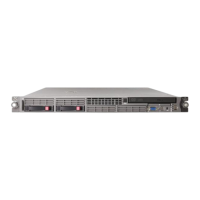mapping for a dual port device (see “LUN Mapping (v3.x)” on page 123 or
“LUN Mapping (v2.x)” on page 129), the defined LUN number for that device for a specified host
applies to both device paths. Follow the operating system LUN requirements (see
“Operating System LUN Requirements and Restrictions” on page 121) when configuring the paths.
Creating a Virtual Library
Before creating a virtual library, you must first:
• Determine the best way to manage VLS virtual library and tape drive LUNs for your environment
(see “Managing Virtual Device LUNs” on page 120).
• Determine the best way to configure virtual libraries and tape drives on your VLS for your environ-
ment. See the HP StorageWorks 300 and 12000 Gateway virtual library system solutions guide.
You can configure any combination of virtual tape libraries and virtual tape drives up to the maximum
number supported on the VLS. You can configure one node with up to 16 libraries with a total of up
to 128 tape drives. With multiple nodes, a single library can span across nodes.
To create a new virtual library:
1. Open a Command View VLS session and log in as the administrator. See
“Opening a Command View VLS Session from a Web Browser” on page 105.
2. Click the System tab.
3. Select Chassis in the navigation tree.
4. Select Create Virtual Library in the task bar.
The Create Virtual Library Wizard opens (Figure 36).
Figure 36 Create Virtual Library Wizard window (1 of 12)
.
5. Select the Fibre Channel host port and node on which to present the virtual library.
Only one port or port pair may be selected.
HP StorageWorks 131

